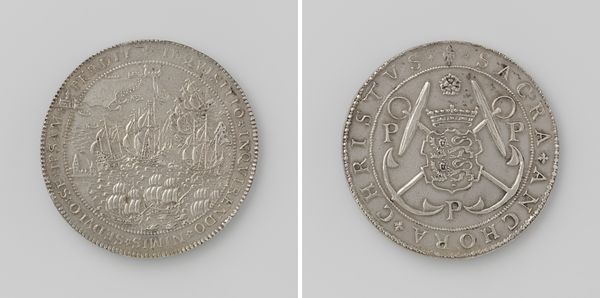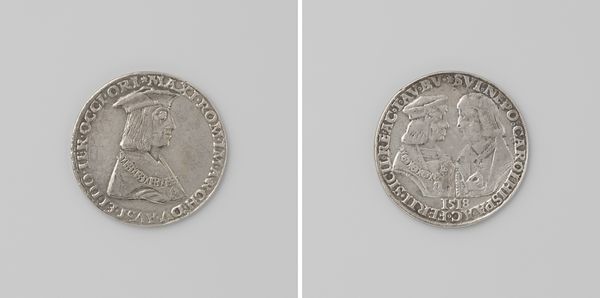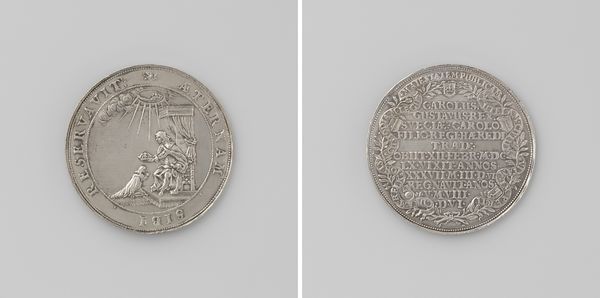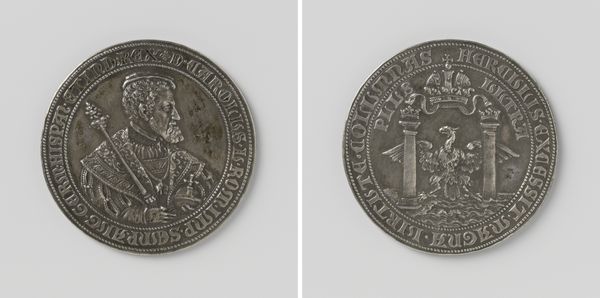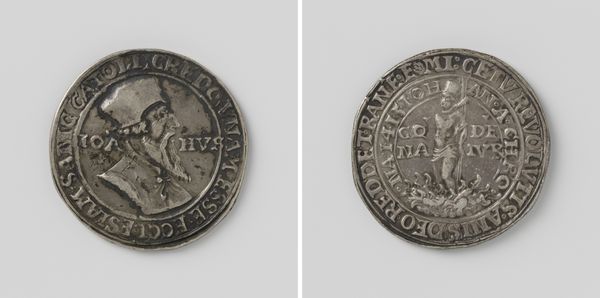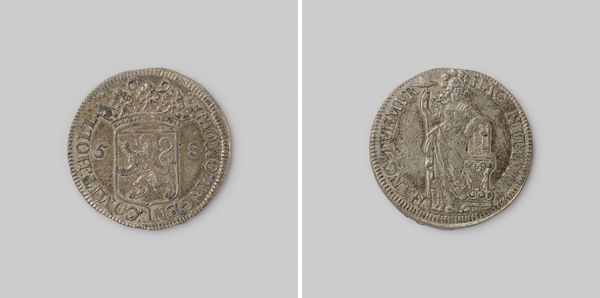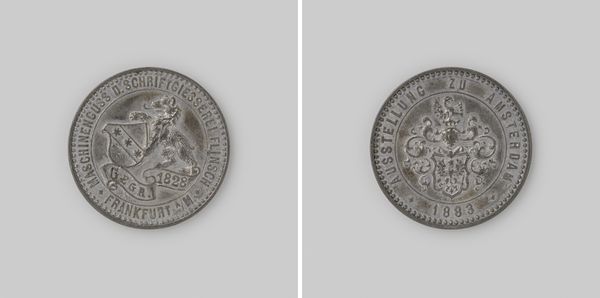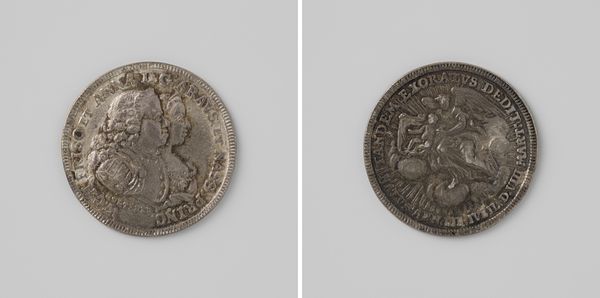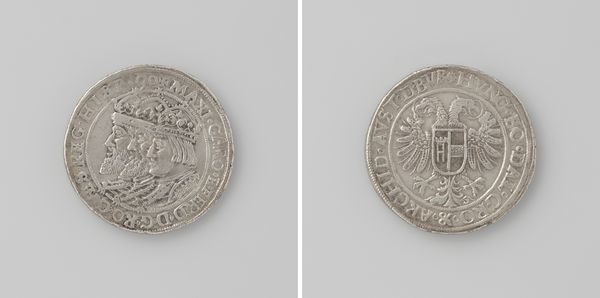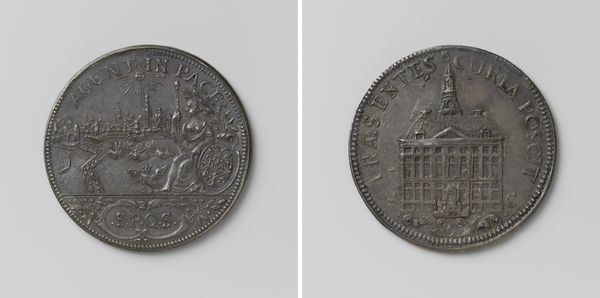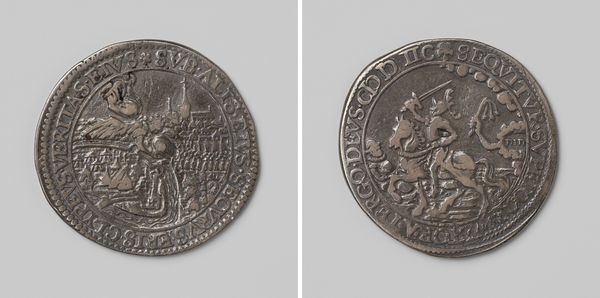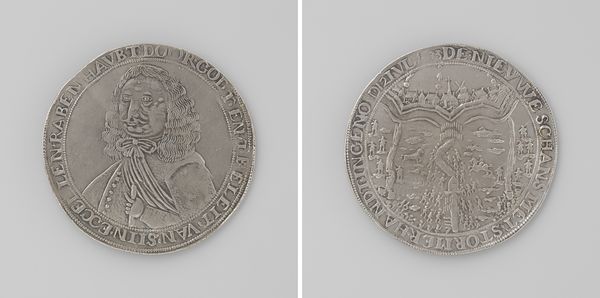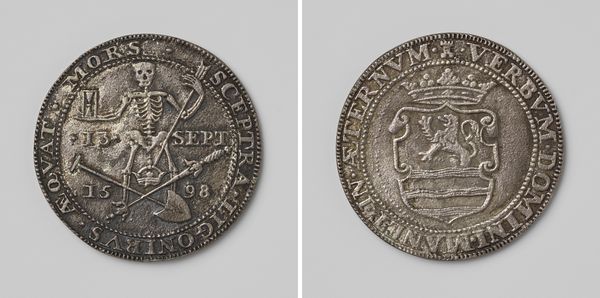
metal, relief, sculpture
#
portrait
#
medieval
#
metal
#
relief
#
sculpture
#
northern-renaissance
Dimensions: diameter 5.9 cm, weight 39.70 gr
Copyright: Rijks Museum: Open Domain
Curator: This exquisite piece is a metal relief from 1481, identified as “Sigismund, Archduke of Tyrol.” The portrait is attributed to an anonymous artist working in the Northern Renaissance style. Editor: Striking! It's remarkable how much detail they managed to pack into such a small, circular format. The man looks…determined, if a little weary. Curator: His expression is a testament to the artistry. But consider what a piece like this represents: Sigismund, immortalized in metal, wielding symbols of power and legitimacy. He's consciously crafting a specific image for posterity. Editor: The imagery really emphasizes status. He is literally crowned and is gripping a scepter, while on the reverse he appears on horseback, holding a banner, as though presenting himself as a warrior or a ruler taking possession of the land. All standard tropes in such images of power. I wonder what was happening socially that made him want to re-assert authority through art like this. Curator: This relief presents a fascinating tension between his earthly authority and divine mandate. Medieval rulers were deeply concerned with demonstrating God's favor through secular success and lineage. It could easily have been a reaction to local challenges or unrest. Editor: It's also a wonderful illustration of Northern Renaissance art—especially compared to the Renaissance work that was coming from Italy. We find very different aesthetics. While their Italian contemporaries focused on grand, allegorical frescoes in airy open villas, in Northern Europe people were immortalizing themselves with very tightly controlled, symbolic, almost claustrophobic objects. What was art’s public role in both societies at that time, do you suppose? Curator: We can consider these works—Northern European pieces specifically—as extensions of reliquaries and religious imagery that lent authority to its patron. The symbols work in concert, drawing from established heraldic tradition, and reinforcing an aura of stability through controlled artistic conventions. These works became symbols of the cities or states they represented and often served public purposes. Editor: A reminder of what persists—who persists—across time. This object acts almost like propaganda through the ages. It’s interesting how power is continuously restaged, generation after generation. I keep looking back at that stern, almost downcast expression and feeling the weight of the world closing in on Sigismund. Curator: Well, whether deliberate or subconscious on Sigismund’s part, its powerful effect continues centuries later.
Comments
No comments
Be the first to comment and join the conversation on the ultimate creative platform.
